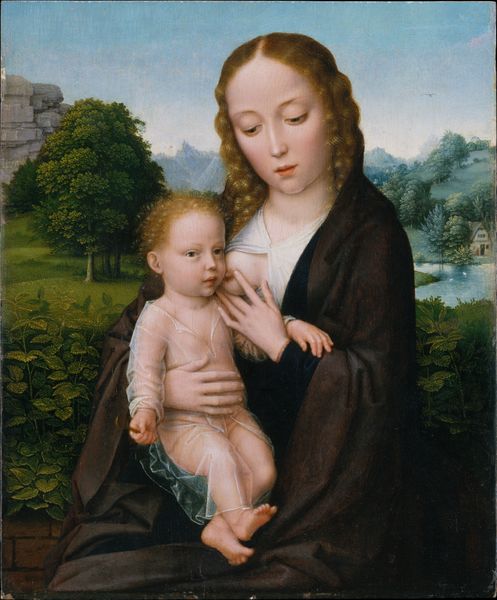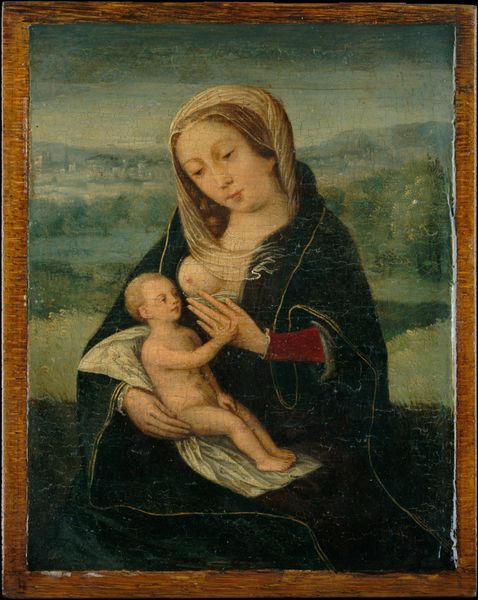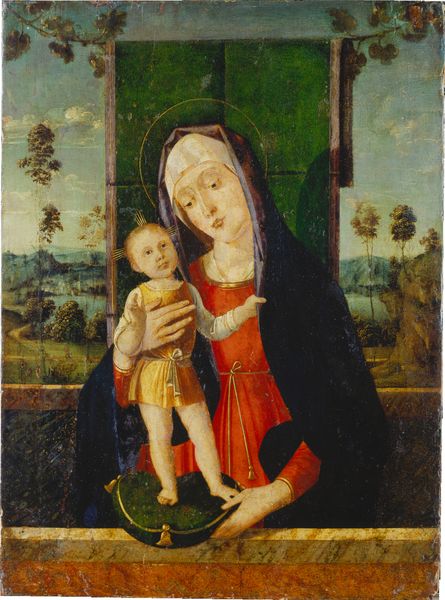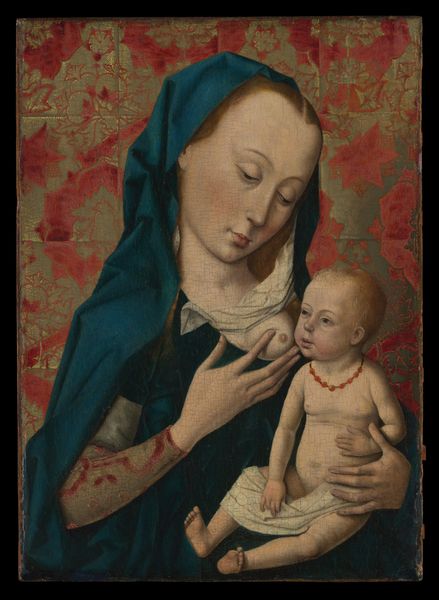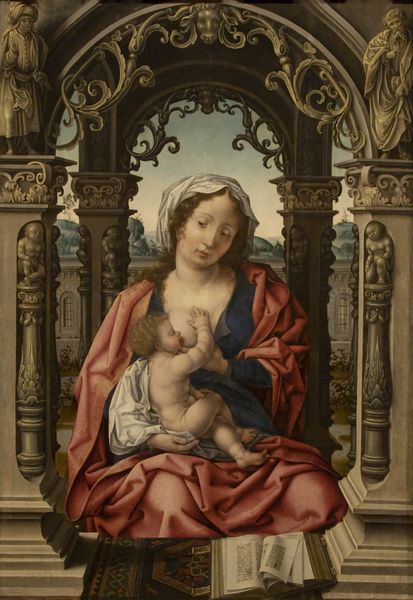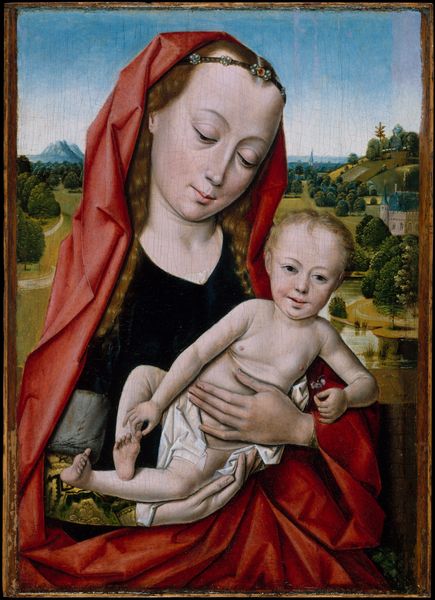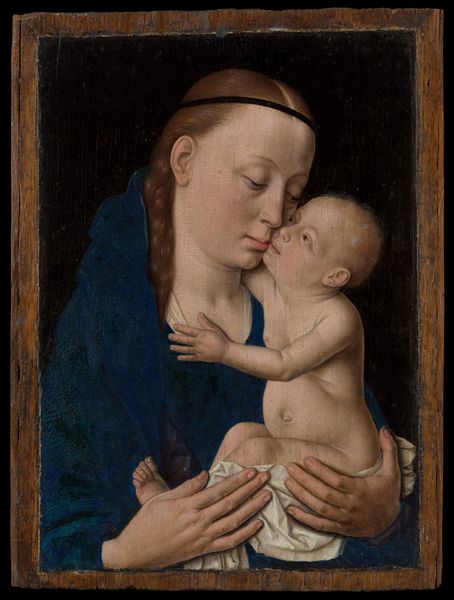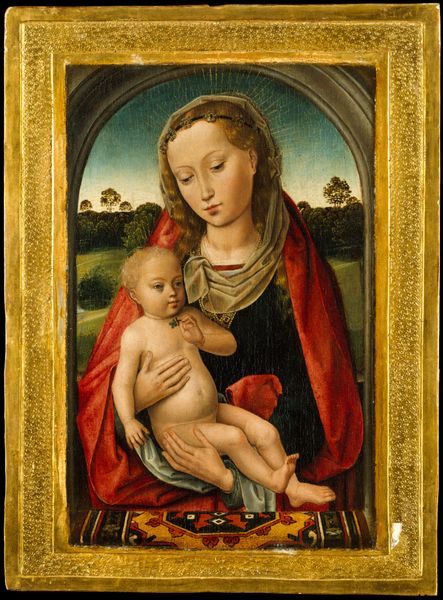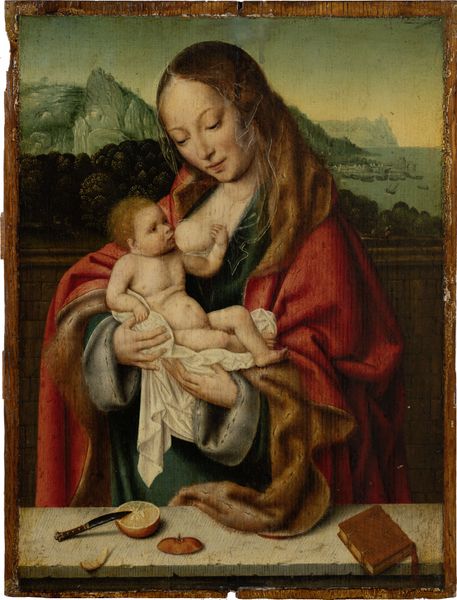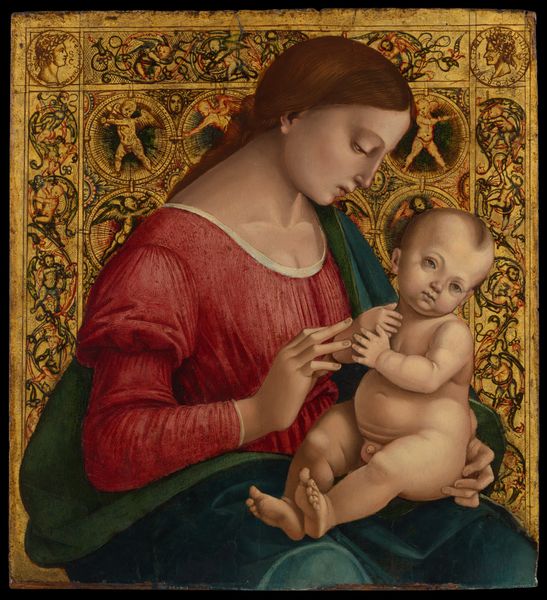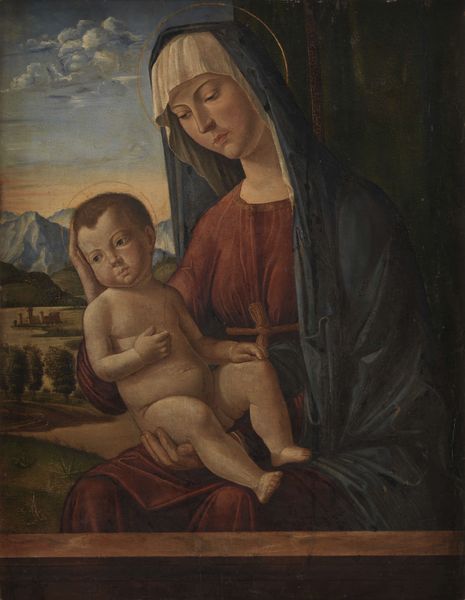
painting, oil-paint, sculpture
#
portrait
#
medieval
#
painting
#
oil-paint
#
oil painting
#
sculpture
#
genre-painting
#
history-painting
#
northern-renaissance
Dimensions: 40.4 × 31.6 cm (15 7/8 × 12 7/16 in.); painted surface: 38.7 × 30.5 cm (15 1/4 × 12 in.)
Copyright: Public Domain
Curator: Adriaen Isenbrant’s "Virgin and Child," dating from 1515 to 1525, presents a remarkable study in early Northern Renaissance portraiture, now residing at the Art Institute of Chicago. The artist renders his subjects in oil with palpable luminosity. What are your initial thoughts? Editor: Oh, there’s an almost unsettling quietude about it. The colors are muted, almost like looking at a faded tapestry, yet the expressions... vacant? Is that too harsh? Curator: Vacancy perhaps does not entirely capture the profound formal construction inherent here. Notice Isenbrant’s meticulous modeling of light, a play of illumination that softens the flesh tones, conforming to established Renaissance ideals of beauty and serenity. Semiotically, each element operates within a codified structure, from the Madonna’s veil to the carefully observed details in the distant landscape. Editor: See, to me, the landscape is the best part. It’s dreamlike, that castle floating in the background. It is more like a stage set. And there is such stillness; almost eerie, despite the domestic tenderness they are trying to capture. You know, mothers feeding their kids? It's oddly joyless here, isn't it? Curator: While the painting does adhere to traditional iconography of the Madonna and Child, your invocation of 'joylessness' is not entirely unsupported. There’s an element of formal constraint, and, arguably, the gazes of both figures do seem inwardly directed, rather than reflective of overt pleasure. This is also the beginning of mannerism art which started breaking rules from the previous periods in painting! Editor: Yes, inwardly directed – exactly. Maybe they're onto something the rest of us aren't. I guess I can't help but wonder what they’re thinking, you know? Is the Madonna resigned? And the child, that’s definitely not a happy baby! The symbolism might be clear on the surface, but emotionally it’s a bit of a cipher. Curator: The enduring interest in Isenbrant's composition rests precisely on such subtle tensions. He invokes devotion through form, while hinting at psychological depths that defy simplistic interpretations. Editor: Well, now that you point it out, I feel less crazy for noticing what I noticed. What starts as this perfectly pleasant surface soon takes you deeper, it asks these other questions... nice.
Comments
No comments
Be the first to comment and join the conversation on the ultimate creative platform.
